Get PeakVisor App
Sign In
Search by GPS coordinates
- Latitude
- ° ' ''
- Longitude
- ° ' ''
- Units of Length

Yes
Cancel
Share ×

Scan the QR code and open PeakVisor on your phone
❤ Wishlist ×
Choose
Delete
This lush and hilly landscape is across the Danube River and directly south of Novi Sad in Serbia. It is known as Fruška Gora, the highest elevation in Syrmia or Vojvodina. You can enjoy rolling hills covered by forests and grasslands as far as the eye can see. There are 149 named mountains in Fruska Gora National Park. The highest and most prominent mountain is Crveni Čot (548 m/ 1,797 ft).
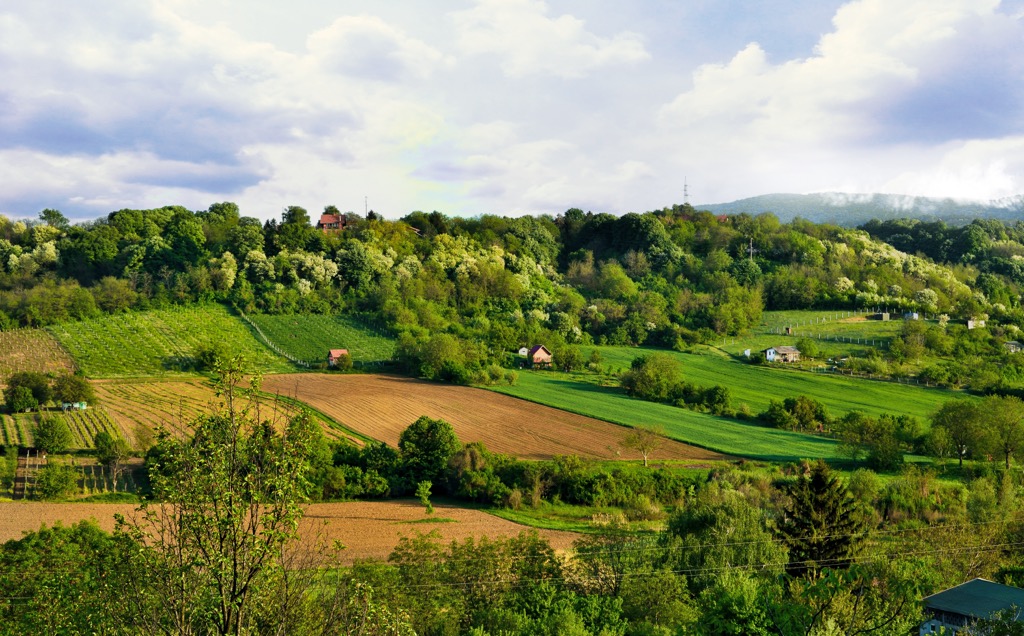
Fruska Gora National Park is in northern Serbia, in the province of Vojvodina. The park was established in 1960 and encompasses the Fruska Gora mountain range, which stretches approximately 80 km (50 mi) in length and 15-20 km (9- 12 mi) wide. The highest peak is Crveni Čot (548 m/ 1,797 ft), and the most popular tourist center is Irishki Venac Spomenik (509 m/ 1,669 ft).
Fruska Gora mountain range is known for its diverse landscape, which includes forests, meadows, vineyards, and orchards. The mountain range is also home to numerous caves, springs, and streams, making it a popular destination for hiking and nature lovers.
The Danube and Sava Rivers, two of the largest in Europe, surround the Fruska Gora mountain range. The park is near several major cities, including Novi Sad, the second-largest city in Serbia, and Belgrade, the capital.
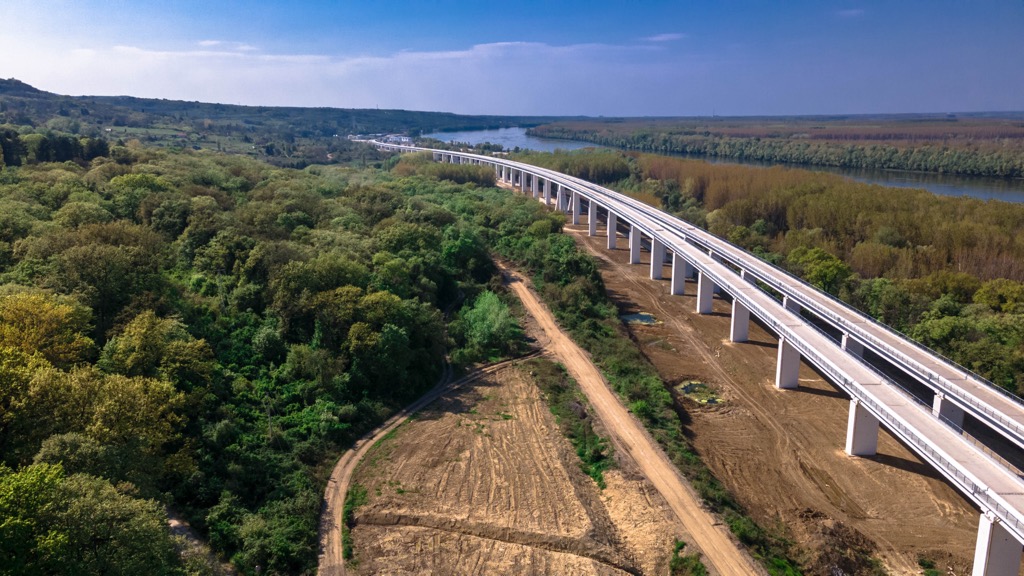
Fruska Gora is an isolated mountain range in the Pannonian plain, heavily dissected by streams and rivers to the north and south, with separate ridges branching off from the main ridge. The slopes of these ridges are often very steep. You will see rolling hills here, but also numerous rock faces.
The mountain's unique geological history and different micro-climatic conditions make it significant for various scientific fields. Fruska Gora has a relatively complex geological structure compared to other regions. The oldest parts of the mountain range are serpentinites, which are rocks that were once gabbro peridotites that changed over time. These rocks date back to the Paleozoic era.
The mountain range comprises several additional rock formations, including philistines, mica, chlorite, and amphibolic shales, dating back to the Paleozoic era. There are also conglomerates, sandstones, clays, clay-sandstones, and limestone, which are younger formations.
The area also features loess, a sedimentary rock formed by the accumulation of wind-blown dust. This thin loess covering can be found throughout the mountain range, covering the terrain's surface from the highest elevations down to the alluvial plains of the Danube and Sava.
In addition to its diverse geology, Fruška Gora is also known for its rich fossil record, which includes numerous remains of plants and animals. Due to the many fossils, Fruska Gora is a "mirror of the geological past." Overall, the unique geology and fossil record of Fruška Gora make it an important site for scientific research and study.
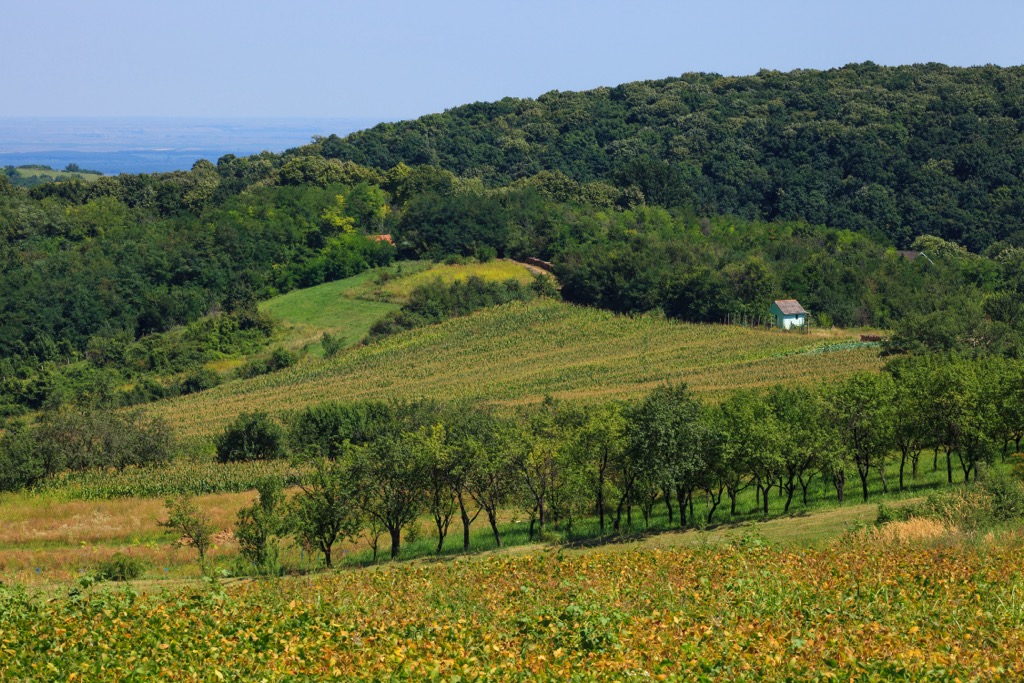
The highest peaks in the park include:
Fruška Gora is a unique ecosystem with diverse flora and fauna. The mountain is covered in deciduous and coniferous forests and is home to a diverse range of plant species, with over 1,000 plant species growing within the narrow zone of the National Park. Fruška Gora is also home to medicinal plants - as many as 700 plants in the region have therapeutic value. Most of these are wild, but some are cultivated.
Fruska Gora has a sub-continental climate due to its forest cover, even though its location and elevation should have a continental climate. The mountain's ridges have cold winters and cool summers. Over millennia of human habitation, the forest cover has decreased. Of the original 130,000 ha (321,237 ar), only 23,000 ha (56,834 ar) remain.
The mountain has 33 forest types, each with different geological substrates and soils. The forests are mainly mixed and feature more than 50 tree species. Silver-leaved linden, sycamore, cherry, beech, and hornbeam are the most common.
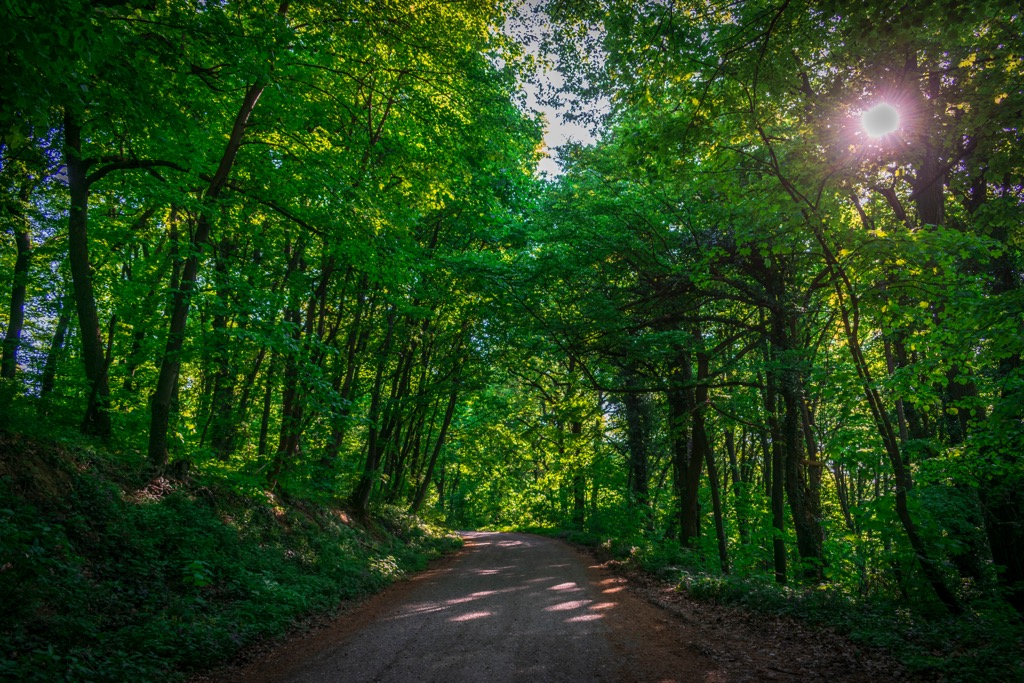
There are 23 species of amphibians and reptiles, such as the rare Salamandra salamandra and the only poisonous snake on Fruška Gora, Vipera berus. There are 60 mammal species on Fruška Gora, primarily native except for fallow deer and mouflon. Thirty-eight of these species are protected as natural rarities.
Fruška Gora is home to about 220 bird species, including migratory birds that briefly stop by twice a year. There are many birds of prey, such as the golden eagle, click eagle, pygmy eagle, steppe falcon, harrier, and short-toed sparrow.
This National Park is particularly well-known for its cultural and historical significance. Humans have inhabited the mountain range since prehistoric times. Over the centuries, it has been home to numerous monasteries, churches, and other cultural landmarks.
When you visit Fruska Gora National Park, you can explore many historical and cultural sites scattered throughout the forests and other areas. Fruska Gora has a rich and diverse history that spans several centuries. The area has been inhabited by various civilizations since ancient times, including the Celts, Romans, and Goths.
One particular site of interest is the Acumincum fortress near Stari Slankamen or Malata Bononia at Cerevic; many well-preserved medieval monuments remain. Roman texts first mentioned the area as Alma Mons, or ‘a nourishing mountain.’ The range served as a natural border between the Roman Empire and the tribes of Pannonia.
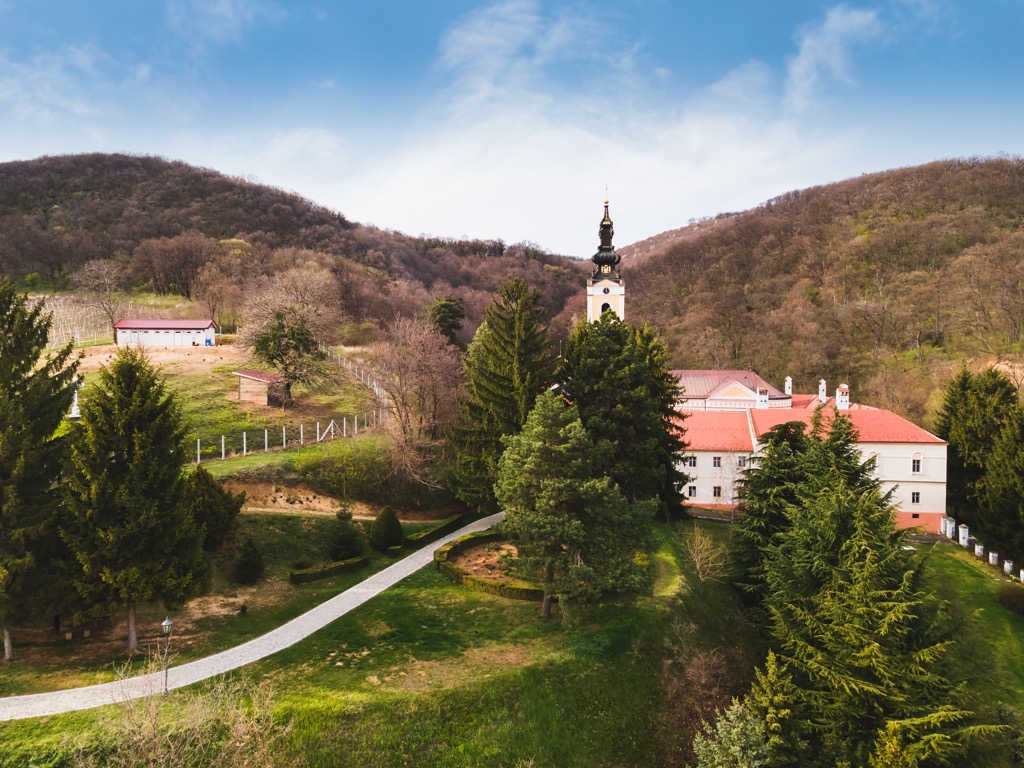
During the Middle Ages, the area was ruled by the Hungarian Empire. Many preserved monuments from that time are churches and monasteries; these religious buildings were built in the Byzantine style and feature beautiful frescoes and intricate artwork.
Fruska Gora also played a significant role during the Ottoman Empire's European reign. The mountain served as a military frontier, and many fortifications and watchtowers protected against Ottoman invasions.
Some of the medieval monuments worth checking out include the remains of the fortress near Slankamen, Vrdnik Tower, the famous Petrovaradin Fortress, and the Peace Chapel in Sremski Karlovci.
The Ottoman Empire conquered the area in the sixteenth century and ruled for nearly two centuries. Armies destroyed many Serbian Orthodox monasteries during this time, and their treasures were plundered or burned. However, some managed to survive and played an essential role in preserving the Serbian language and culture.
During the Second World War, many monasteries again suffered heavy damages and were plundered, with their art treasuries burnt up and frescoes and paintings destroyed. Some of the monasteries, such as Besanovac, Kuvezdin, and Sisatovac, have only ruins remaining, while others, such as Rakovac, Djipsa, Grgeteg, Jazak, Hopovo, and Velika Remeta, suffered heavy damages.
After a long period of Ottoman reign, the Habsburg Empire took control of the region and ruled until the end of World War I. The mountain became a popular destination for wealthy people from Austria-Hungary, who built summer residences and villas.
In addition to these historical and cultural sites, Fruska Gora also has many traces of recent history. During the Second World War, when almost all of Europe was under German occupation, Fruska Gora remained a liberated territory. You can still find monuments and memorials throughout the area commemorating this time. At Irishki Venac Spomenik (509 m/ 1,669 ft), a large monument is dedicated to the Partisans of Srem, created by the sculptor Sreten Stojanovic. Each village in the area keeps memories of those days.
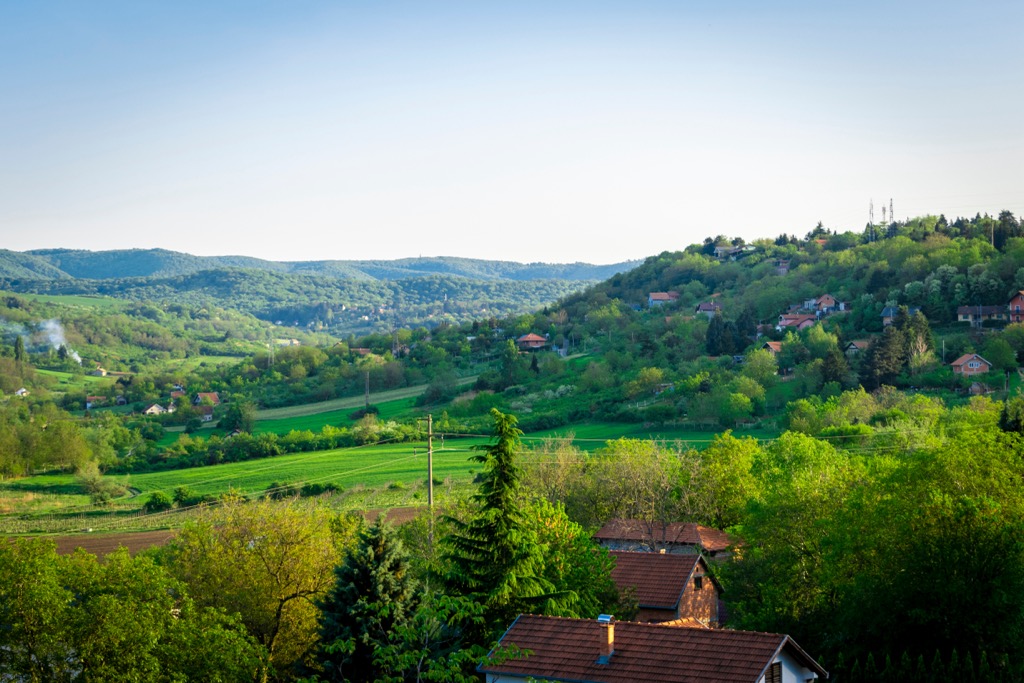
These are the hikes I would recommend on Fruška Gora:
This easy hike covers a distance of around 6 km (3.5 mi). It starts from the village of Ledinci and takes approximately 2-3 hours to complete. The hike takes you through the vineyards and orchards of Fruska Gora foothills and offers beautiful Danube River and Pannonian Plain views. You will also come across several historic sites, including the Ledinci Fortress and the eighteenth-century Church of St. George.
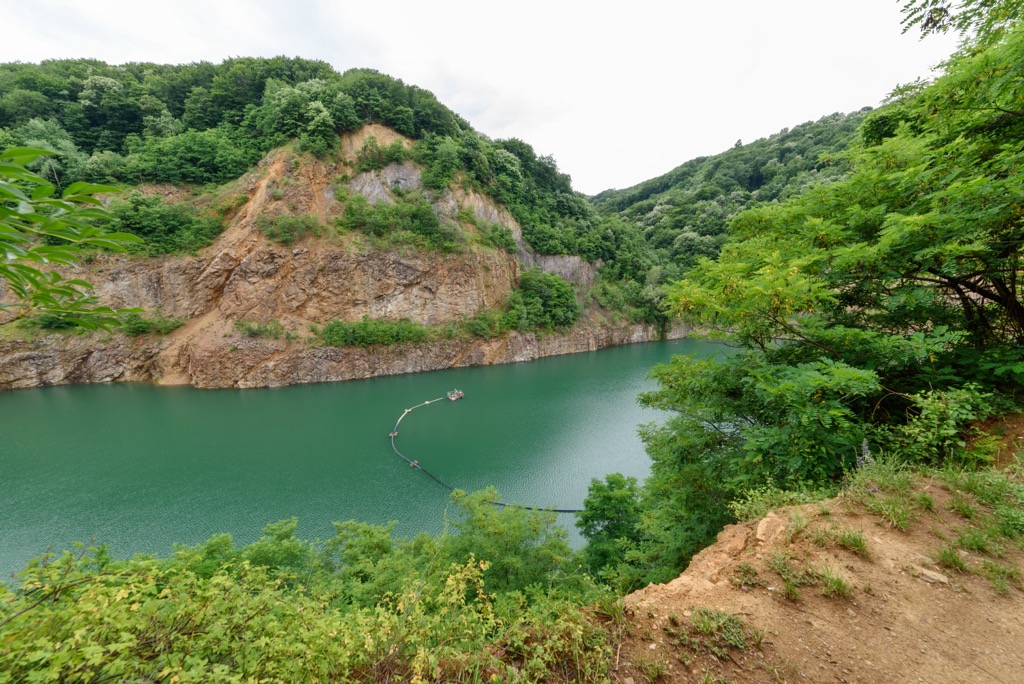
This moderate hike covers a distance of around 12 km (7.5 mi). It starts from the Iriški Venac trailhead and takes approximately 4-5 hours to complete. The walk takes you through the forested hills of Fruška Gora and offers stunning views of the surrounding countryside. You will also come across several historic sites, including the Irishki Venac Spomenik (509 m/ 1,669 ft) and a former Partisan hospital site.
This strenuous hike covers a distance of around 10 km (6 mi). It starts from the village of Sremski Karlovci and takes approximately 5-6 hours to complete. The hike takes you up to the top of Stražilovo Hill, which offers spectacular views of the surrounding countryside. Along the way, you will also pass by the Chapel of Peace, the Stražilovo Monument to Branko Radičević, and the Stražilovo Hotel.
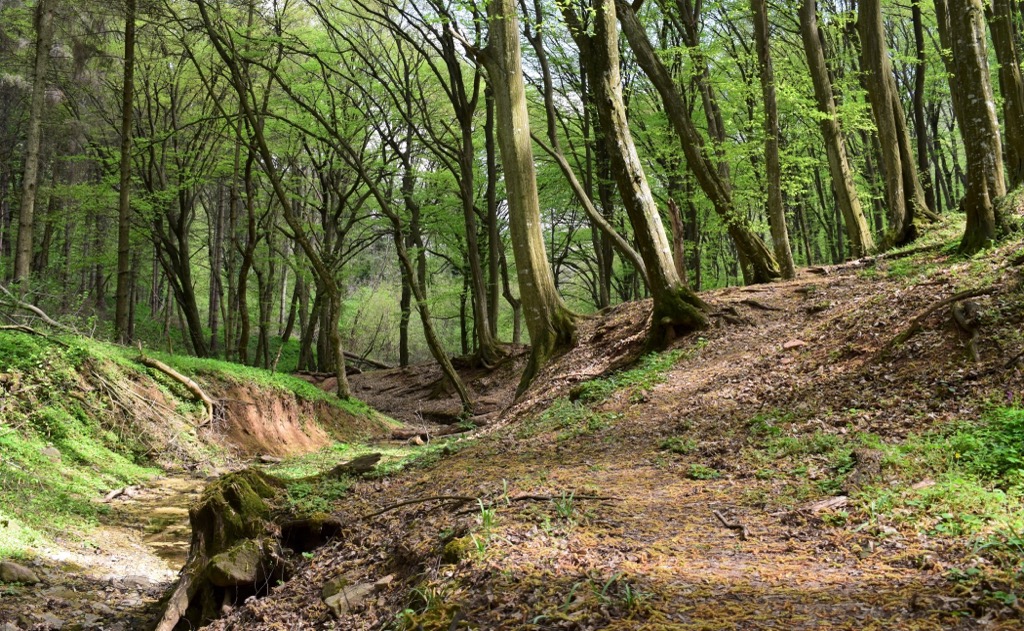
These are the biggest cities near Fruška Gora National Park:
Novi Sad is a city in northern Serbia situated on the banks of the Danube River. It is the second-largest in Serbia after Belgrade, with around 300,000 people.
The city is known for its rich cultural heritage, reflected in its architecture, museums, galleries, and festivals. One of the most popular festivals in Novi Sad is the Exit Festival, which is held in July and attracts thousands of visitors from all over Europe.
Novi Sad offers various accommodation options to suit every budget, from hostels and guesthouses to luxury hotels. The city's architecture is a mix of styles, including baroque, neoclassical, art nouveau, and modernist, reflected in its many buildings and monuments.
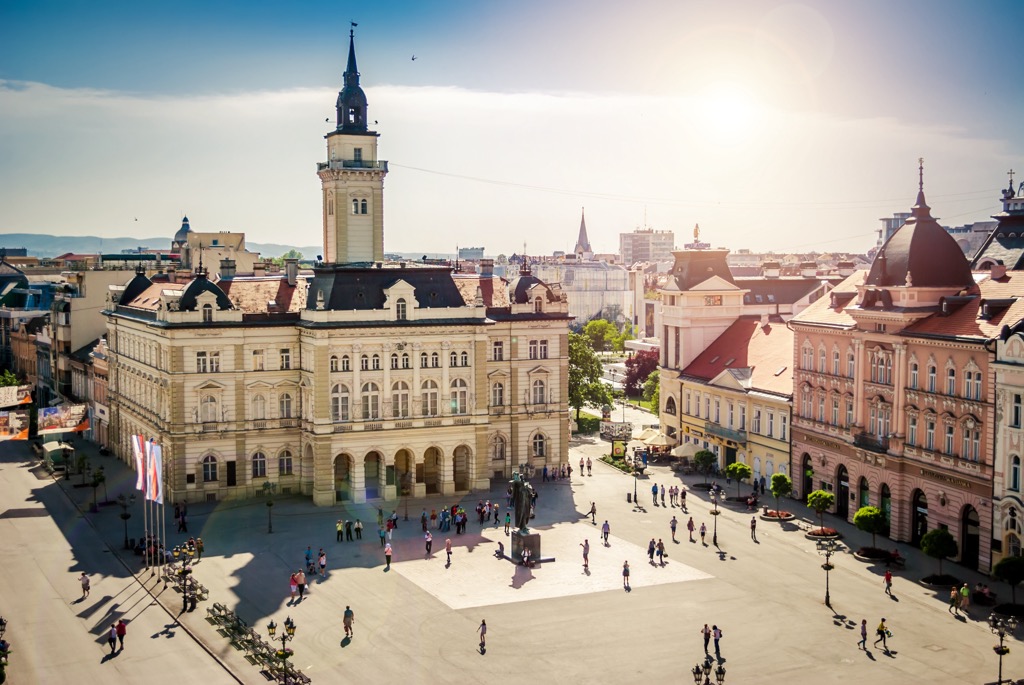
Belgrade is the capital and largest city of Serbia, located in the central part of the country at the confluence of the Sava and Danube Rivers. It has a population of around 1.2 million inhabitants.
Belgrade is known for its rich history and cultural heritage, as well as its vibrant nightlife and culinary scene. Visitors can explore the city's museums, galleries, and historic landmarks, such as the Belgrade Fortress, St. Sava Temple, and Kalemegdan Park. Belgrade is also known for its architecture, which reflects its diverse cultural influences over the centuries. Visitors can see examples of Ottoman, Austro-Hungarian, and Serbian Orthodox architecture throughout the city.
Accommodation options in Belgrade include hotels, hostels, and private apartments. The city offers a range of options to suit different budgets and preferences.

Osijek is a city in the eastern part of Croatia, near the border with Serbia. It is the fourth-largest in Croatia, with around 100,000 inhabitants. The city's main attraction is the Tvrđa, a well-preserved Baroque fortress that dates back to the eighteenth century.
As for accommodation options, Osijek offers a range of hotels, hostels, and private apartments for tourists. Some popular choices include Hotel Osijek, Hotel Central, and Hotel Waldinger.
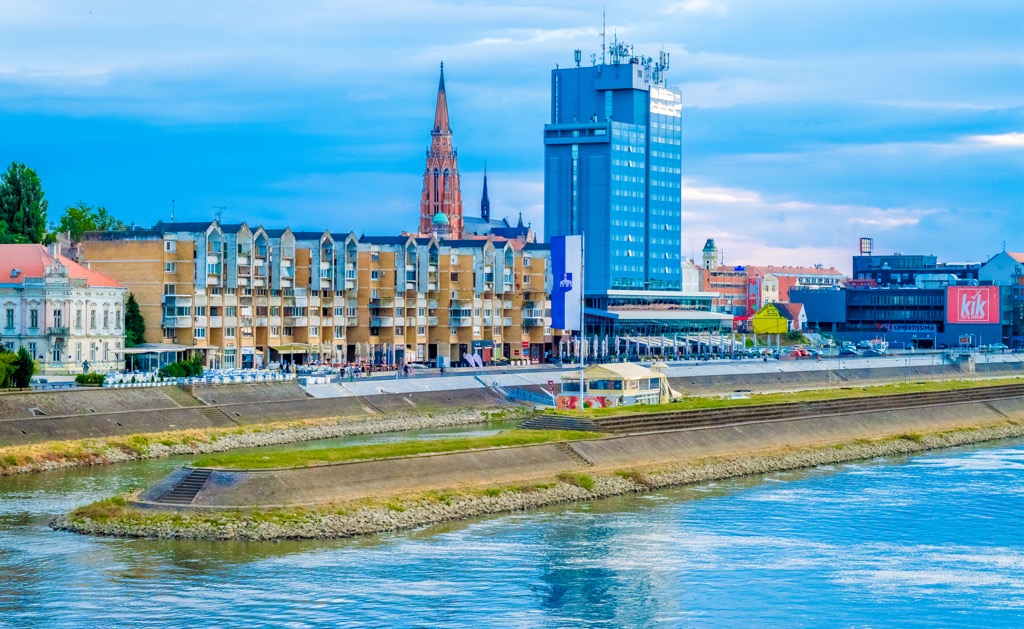
Explore Fruska Gora National Park with the PeakVisor 3D Map and identify its summits.








